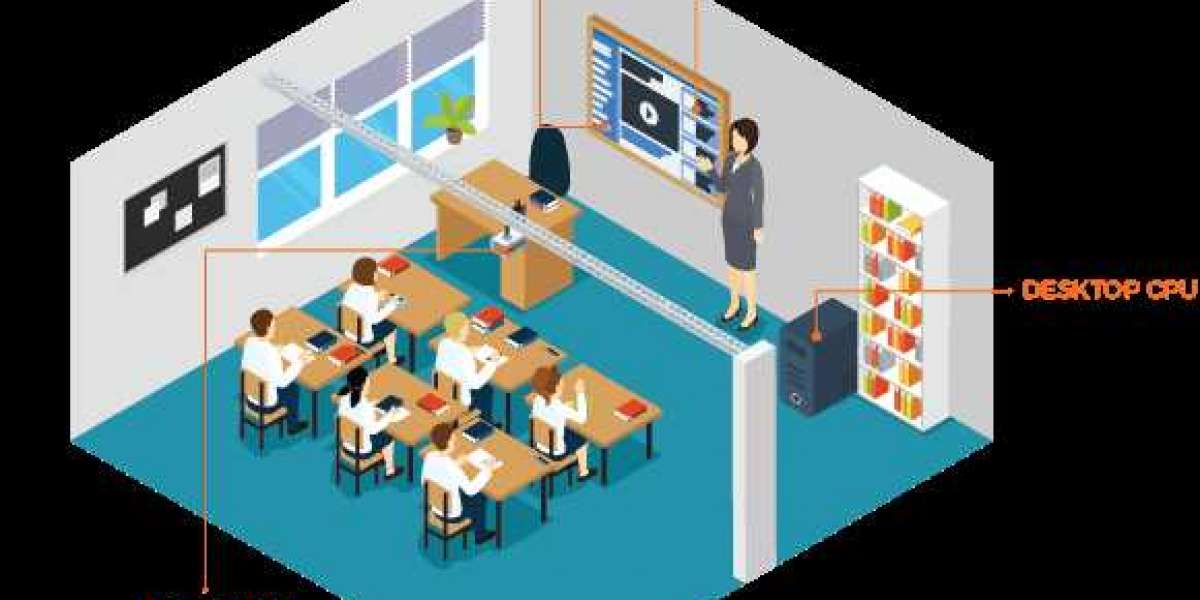Slide show presentations
Slide show presentations can prove to be a very effective way of teaching. The colorful presentations can be used to visually engage the students in the learning process. Research has shown that the powerPoint presentation can improve the learning in lower-performing STEM students and that students of STEM disciplines can be benefited by visually representing physical and natural phenomena.
Presenting complex information in simple and interesting ways can keep the audience engaged. Striking images can attract the attention of the audience. Presenting information in bullet form makes following the information very easy. It has been seen that information presented through slides is retained in memory for a longer time.
Flipped classroom
As the name suggests, in the flipped classroom method the roles of students and teachers are interchanged. At home, the teacher creates the video lecture and shares it with the students and students watch the video lecture, do research, and prepare questions for the teacher.
At school teacher starts at the discussion and answers the questions asked by the students and students ask the question and participates in active learning. In this method, the time in school is reserved for group discussion and interactive learning.
Studies show that 71% of the teachers who were involved in flipped classes claimed a significant improvement in grades. A dramatic change in the student's attitude was also visible. About 99% of the teachers who participated in flipped classes said they will again flip the classes in next year
Invite entrepreneurs
Entrepreneurship is the need of the hour. Students should know how to start their own business. Inviting self-made entrepreneurs into the classroom live or through virtual means will give a better idea to the students about how to change your thoughts into a business.
Students will realize that there is a world full of opportunities outside the books. Teachers can organize an online session for students to interact with leading entrepreneurs. Teachers can invite leading innovators through social media sites like LinkedIn or Twitter. There are a lot of innovators willing to give sessions to school students as there is no course to learn entrepreneurship.
Interactive smart-boards
Interactive smart-boards are an exciting way to actively engage the students with lessons. An interactive smart-board is also known as an electronic whiteboard, it is a classroom tool that allows images from the computer screen to be displayed on to the classroom board using a projector. According to a recent article from Yale University, lessons presented on interactive whiteboards increased student engagement in class. Students participated more actively in the classroom, took more notes, and asked more questions. An interactive smart-board also increases group activities like brainstorming and problem-solving. With the interactive smart-board, teachers can easily digitize the lesson and make it easy for students to follow.
Today's students will be expected to have full familiarity with modern digital tools when they reach their careers. An interactive whiteboard can be that tool that helps the student to gain familiarity with technology which they will require in their future career.
Digital field trips
Digital field trips are becoming popular, useful, and cost-effective tools to use technology in the classroom for going on field trips. Google Streetview and other apps allow visualizing the national parks, international landmarks, forests, etc. from the comfort of the class. Virtually experiencing the forest or the historical landmarks will give the students an experience that will extend their learning beyond the pages
Digital field trips can prove to be very cost-effective and provides the opportunity to go on a field trip for disabled students too. It will motivate students to get indulged in technology. Digital field trips can be organized for an environment that will otherwise be too risky for children to go to.
Gamification
Learning should be fun and gamified learning can help teachers achieve that goal. Gamified learning can make even the most formidable lessons fun to learn. It will create an environment of motivation and healthy competition as nobody likes to lose.
Gamification can give real-time feedback as students will have a better idea of how they are doing with their subject and will continue to put in their efforts until they get a better score. Learners in gamified learning can work together as a group in a competitive environment, this will encourage critical thinking, strategy making, sharing of ideas, and healthy debates.
Conducting online webinars
Classrooms can easily become noisy and students can get disinterested in the topic. Students can be made to engage in learning by conducting online webinars. It engages the students in commenting, and participating in the questionnaires can keep them alert.
Teachers can present beautifully created presentations through webinars and can communicate with many students efficiently at the same time. One of the limitations of conducting online the winners is that attending webinars can become difficult for those students who live in remote areas.
Smart class
A smart class can provide better student-teacher introduction. The smart class gives a better understanding of the concept. It can provide a rich learning experience. It introduces both teachers and students to education technology.
Smart class technology ensures that the concept reaches every level of students properly. According to the Gallup survey, the engagement of students after installing smart classes in schools and colleges increased by 55%.
Use of classroom responsive system
Implementing a BYOD (bring your own device) into the classroom can help students to take part in polls and quizzes by using their smartphones. There are many apps available such as TopHat, iClicker, Socrative, etc. that allows a large group of students to answer multiple-choice questions at once in real-time.
These tools can give the teacher and instant feedback about whether or not the students have understood the concept clearly or not. Group forms can be used for problem-based learning. A group is given a problem and they have to solve it within a limited time frame. The group will indulge in collaboration and solving the problem as a team rather than coming up with an answer individually.







